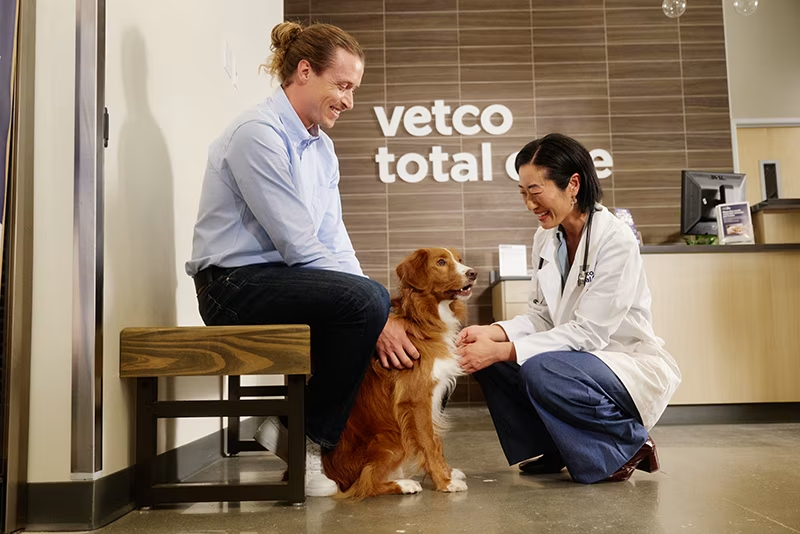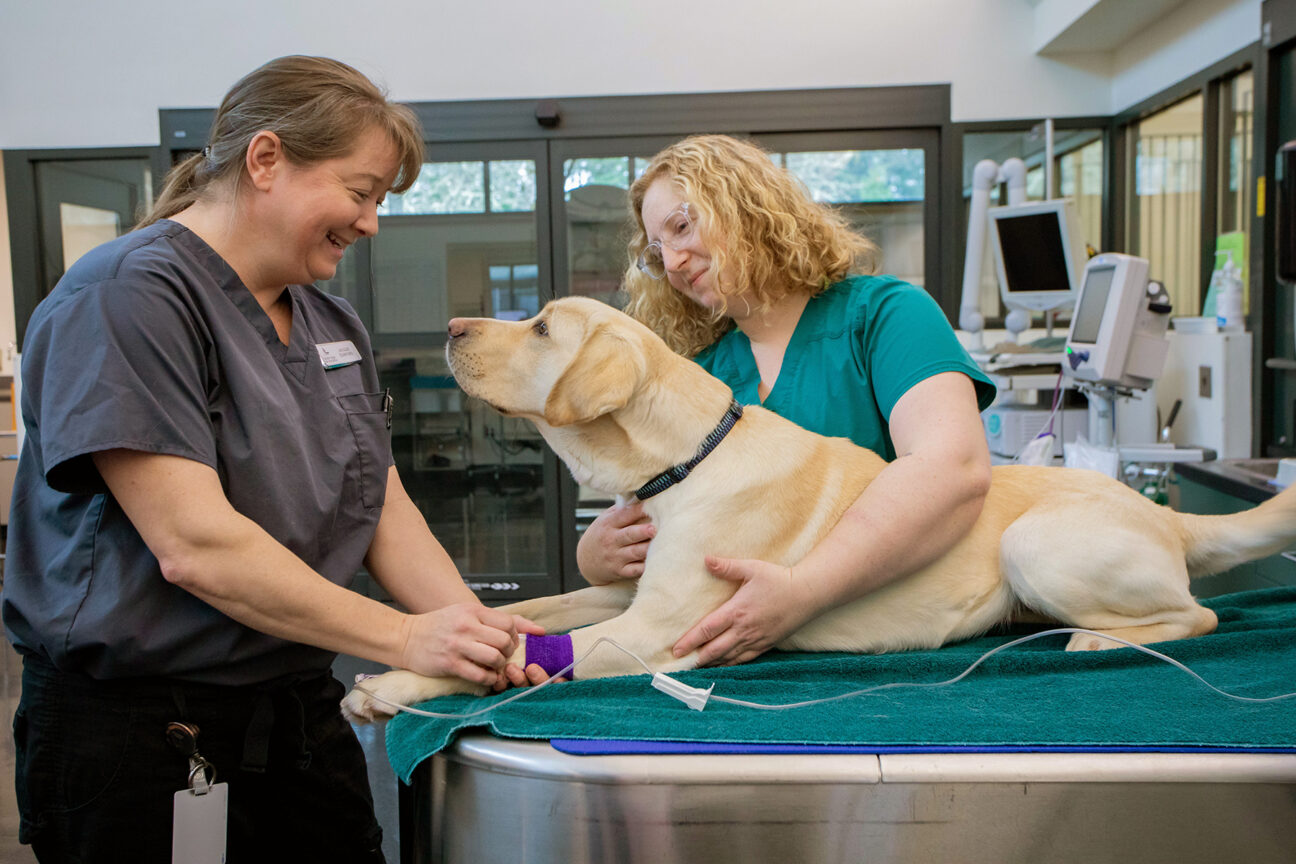Most Common Emergency Surgeries Performed at animal emergency care bellingham Centers
Wiki Article
Why Animal Rehab Is Essential: the Perks of Vet Providers for Your Family pet's Healing
Pet rehab is a necessary part of healing for pet dogs facing injuries or impairments. Veterinary services supply critical assistance via customized rehabilitation strategies that attend to private needs. These plans frequently consist of discomfort management, physical treatment, and nutritional advice. Understanding the different elements of animal rehabilitation can brighten its relevance in boosting recovery results. What particular benefits do these solutions provide, and just how can they change an animal's recovery trip?Understanding Pet Rehabilitation
Animal rehabilitation encompasses a variety of therapeutic practices intended at restoring the wellness and functionality of hurt or handicapped animals. This field integrates different methods, including physical therapy, hydrotherapy, and occupational treatment, tailored to satisfy the certain needs of each pet. Recovery specialists assess a pet's problem, developing personalized treatment strategies that may involve exercises to reinforce muscles, improve movement, and improve overall wellness. The process not just concentrates on physical healing yet additionally addresses psychological and behavioral facets. Pets often experience tension and anxiety complying with an injury, making mental health considerations important in recovery. By developing an encouraging setting, therapists can help pets reclaim their self-confidence and adapt to their new situations. Through normal sessions, animals can experience significant enhancements, ultimately resulting in a far better lifestyle. In general, comprehending pet rehab highlights its importance in advertising recuperation and boosting the bond between pets and their owners.
The Function of Pain Monitoring in Recuperation
Exactly how important is efficient pain monitoring in the recovery of damaged animals? It plays a crucial function in helping with healing and improving the overall wellness of pets. Correct discomfort monitoring not only reduces pain yet additionally advertises flexibility, enabling pets to get involved in rehab activities necessary for healing. When pain is effectively managed, pets often tend to react favorably to treatment, bring about quicker rehab outcomes.Veterinarians utilize numerous methods to assess and resolve pain, including drugs, acupuncture, and alternative treatments. By tailoring pain monitoring strategies to the individual needs of each pet, vets can assure that pet dogs remain tranquil and cooperative throughout their healing trip. Additionally, decreasing pain helps in reducing tension, which can inhibit healing and lengthen healing times. To summarize, reliable discomfort management is crucial for boosting the recuperation process and improving the top quality of life for hurt animals.Physical Treatment Strategies for Animals
Many physical treatment techniques are offered to help in the rehabilitation of family pets recuperating from injuries or surgeries (tplo surgery for dogs). These techniques can enhance movement, alleviate pain, and promote recovery. Restorative exercises, for circumstances, help enhance muscles and boost joint function, allowing animals to regain their physical abilities slowly. Manual therapy, which consists of massage therapy and mobilization, can ease tension and enhance flow, contributing to a much faster recovery.Other strategies such as passive variety of motion workouts motivate joint flexibility and lower tightness. Additionally, electrical stimulation treatment might be employed to boost nerves and muscular tissues, promoting healing and discomfort relief.Veterinary professionals usually tailor these techniques to every pet's particular demands, ensuring a thorough recovery plan. By implementing these physical treatment techniques, family pets can experience better lifestyle and an extra effective recuperation from their ailments. The integration of these practices into rehabilitation programs is essential for suitable recovery outcomesBenefits of Hydrotherapy for Rehabilitation
Hydrotherapy uses considerable benefits in pet rehab, especially in boosting wheelchair. This water-based treatment promotes pain relief while supplying comfort to hurt or recouping pet dogs. Additionally, it facilitates strength-building workouts that add to overall physical healing.Enhanced Movement Renovation
As pets recover from injuries or surgical treatments, enhanced mobility commonly becomes a key goal of their rehabilitation. Hydrotherapy functions as a beneficial device in accomplishing this goal. Through water-based exercises, animals can involve in low-impact activities that assist in joint flexibility and reinforce muscular tissues without the anxiety of weight-bearing activities. The buoyancy of water supports their bodies, permitting raised variety of motion and wheelchair renovation. In addition, hydrotherapy motivates much better equilibrium and coordination, which are essential for bring back normal activity patterns. Normal sessions can cause significant progress in an animal's physical capabilities, inevitably boosting their high quality of life. This approach not only help in recuperation yet additionally promotes a more active and satisfying way of living post-rehabilitation.Pain Relief and Comfort

Relief from discomfort is an essential element of animal recovery, and hydrotherapy substantially adds to this process. By making use of water's buoyancy, hydrotherapy minimizes joint tension and eases discomfort during movement. This therapeutic strategy supplies a relaxing setting where family pets can involve in gentle exercises without the full weight of their bodies affecting their recuperation. The warm water stimulates blood circulation, advertising recovery while also motivating relaxation. Additionally, hydrotherapy sessions can be tailored to meet the details requirements of the animal, ensuring optimal convenience. As family pets experience reduced discomfort and enhanced convenience degrees, their overall willingness to take part in rehabilitation activities usually enhances, leading to a more reliable healing trip. As a result, hydrotherapy works as an essential device in boosting discomfort alleviation and comfort throughout recovery.
Toughness Building Workouts
Strength-building exercises play a vital duty in the recovery process, with hydrotherapy offering one-of-a-kind advantages. This type of therapy uses water resistance to improve muscle mass stamina without placing extreme pressure on the joints. The buoyancy of water sustains the pet's weight, enabling much safer activity and raised range of activity. Additionally, hydrotherapy can improve cardio health and promote overall fitness, assisting in quicker recuperation from injuries or surgeries. The controlled atmosphere additionally decreases the danger of reinjury, making it an optimal alternative for pet dogs requiring rehab. Routine hydrotherapy sessions can cause obvious renovations in wheelchair, stamina, and endurance, ultimately enhancing the animal's quality of life and ability to return to typical activities.Significance of Personalized Rehabilitation Strategies
Custom-made rehab strategies are important for addressing the distinct needs of each pet, making sure individualized therapy approaches. These plans permit efficient progress monitoring and required adjustments, promoting ideal recovery outcomes. Furthermore, an all natural approach can improve the total well-being of the pet, advertising a much more comprehensive rehab experience.Individualized Therapy Approaches
While numerous recovery programs embrace a one-size-fits-all method, the special requirements of try this website each animal require customized treatment prepare for optimal recuperation. Custom-made rehabilitation plans think about different elements, including the pet's varieties, age, case history, and details injuries or conditions. By customizing treatments, veterinarians can resolve each pet dog's unique challenges, making the most of the effectiveness of the rehab process. Embellished strategies may integrate different techniques such as physical treatment, hydrotherapy, and therapeutic workouts, ensuring that the treatment aligns with the pet's abilities and progression. Additionally, individualized approaches foster a more powerful bond between the pet and the caretaker, advertising a much more interesting and encouraging recovery environment. Inevitably, personalized therapy is crucial for achieving ideal possible end results in animal rehab.Development Monitoring and Adjustments

Holistic Recuperation Approaches
All natural healing techniques are vital for efficient animal rehab, as they highlight the importance of customized top veterinarian treatment strategies customized to each pet's details demands. This strategy takes into consideration the physical, psychological, and ecological elements affecting recovery. Customized rehab plans may include a mix of physical treatment, dietary therapy, and behavioral modifications. By addressing these varied aspects, veterinarians can improve the total well-being of the animal and advertise a quicker recuperation. In addition, such customized methods facilitate a much deeper understanding of the family pet's one-of-a-kind challenges, leading to a lot more efficient interventions. Ultimately, holistic recuperation methods not only boost physical health yet additionally add to the animal's psychological and emotional stability, guaranteeing a thorough rehabilitation experience.The Effect of Nutrition on Recovery
Nourishment plays a crucial function in the recuperation process for rehabilitating pets, typically figuring out the rate and efficiency of healing. A healthy diet plan supplies the necessary nutrients that sustain tissue repair work, boost the body immune system, and boost total vitality. Healthy protein is especially vital, as it assists in muscular tissue rebuilding and healing from injuries. Important fats, vitamins, and minerals also add to reducing swelling and advertising ideal mobile function.Veterinarians often highlight the significance of customized nourishment strategies, thinking about each pet's details requirements, age, and health and wellness condition. Correct hydration is just as vital, as fluids facilitate vitamins and mineral absorption and help in cleansing. By ensuring that pets obtain proper nourishment, caretakers can significantly improve their chances of a successful recuperation, resulting in much better lasting wellness outcomes. Inevitably, nutrition works as a fundamental component in the recovery journey, sustaining animals in reclaiming stamina and strength post-injury or illness.Success Stories: Animals Who Flourished After Rehabilitation
Effective rehabilitation stories are plentiful, showcasing the strength of animals that have gotten rid of significant challenges. Take, for circumstances, Bella, a golden retriever that endured extreme injuries from an auto mishap. With dedicated vet treatment and a thorough recovery program, she reclaimed her wheelchair and went back to her spirited self, much to her proprietor's pleasure. Likewise, Max, a senior pet cat diagnosed with joint inflammation, experienced remarkable improvement with a mix of physical therapy and discomfort monitoring. His newfound agility allowed him to enjoy his you could look here preferred sunbathing areas again. An additional motivating instance is that of Coco, a rescued greyhound who got over anxiety through habits alteration and socialization strategies, allowing her to thrive in her brand-new home. These success tales exemplify the transformative power of pet recovery, highlighting that with the ideal support, pet dogs can not just recuperate yet lead fulfilling lives, improving the bonds they show their households.Often Asked Questions
How much time Does the Recovery Process Commonly Consider Pet Dogs?
The rehab process for pet dogs normally differs based upon the injury or problem, varying from a few weeks to a number of months. Specific progress, therapy kind, and commitment to workouts significantly affect the overall period of healing.Are There Any Risks Related To Animal Rehab?
Animal recovery may bring dangers such as worsening of injuries, improper techniques bring about pain, or insufficient monitoring during healing. These variables can hinder development and impact the overall efficiency of the rehab procedure.
Can All Pets Benefit From Recovery Services?
Not all family pets may call for rehab, yet numerous can benefit significantly. Rehabilitation solutions can boost wheelchair, alleviate discomfort, and boost general well-being, specifically for those recuperating from injuries, surgeries, or chronic problems.How Can I Prepare My Family Pet for Recovery Sessions?

What Indications Show My Pet Demands Rehabilitation?
Indicators showing a pet dog might need rehab include problem walking, hopping, reduced activity levels, reluctance to leap, or indications of pain. Observing these habits can trigger owners to seek professional evaluation and therapy for their pets.Report this wiki page